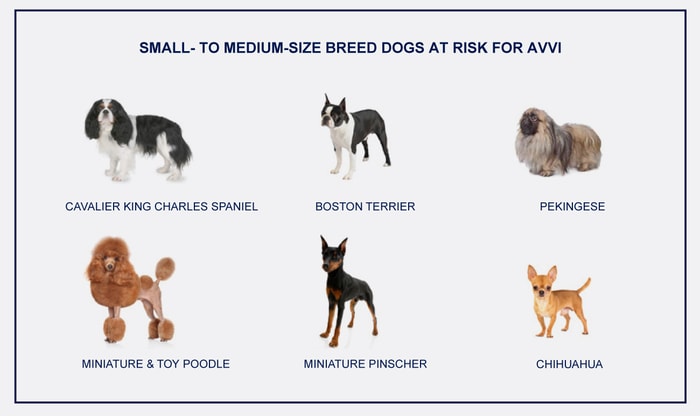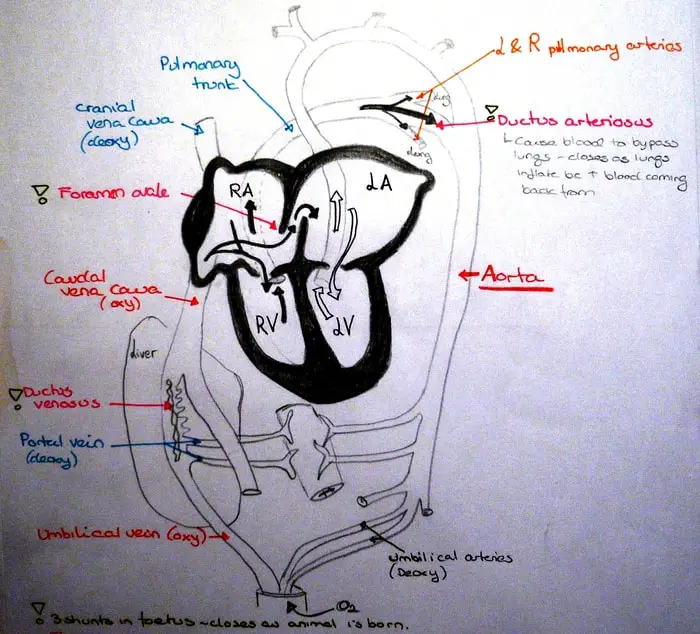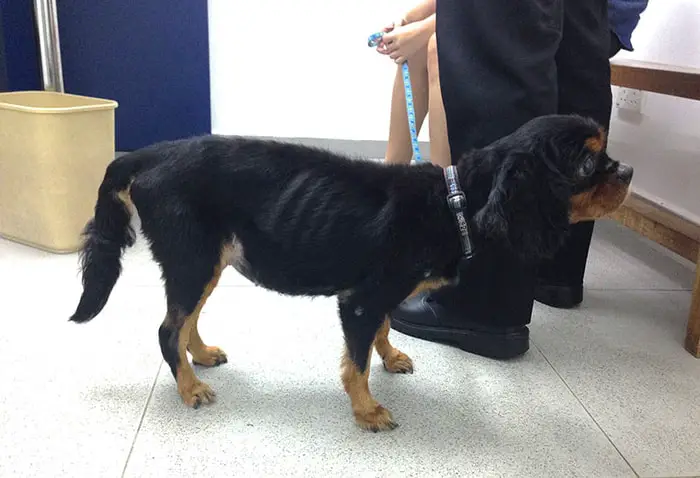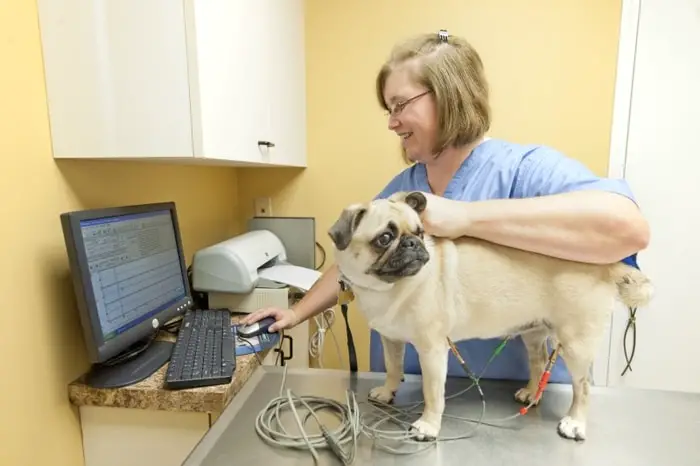Heart failure in dogs is a critical situation that may arise from various congenital or acquired heart diseases in your dogs. Heart disease becomes heart failure when the heart cannot supply blood to the tissues at an adequate rate or when it can only achieve this at raised filling pressures. Filling pressures will be raised with increased ventricular end-diastolic pressures or increased atrial pressures.
Most Important Points on Heart Failure in Dogs
Depending on the specific disease process, it may affect the left and right sides of your pets’ heart. Heart disease can vary depending on age, breed, and congenital disabilities. In this article, I shall briefly describe heart failure in dogs and give you a clear idea about the types of heart failure, diagnosis, treatment, and management.


Dog Breeds with Heart Problems
There are various types of dog breeds that are very prone to heart problems. Seven dog breeds at risk for heart disease are:
- Miniature Schnauzers.
- Boxers.
- Golden Retrievers.
- Cavalier King Charles Spaniels.
- Dachshunds.
- Doberman Pinschers.
- Miniature and Toy Poodles.

The Circulatory System of Dogs
The muscular bottom left chamber of the heart pumps fresh blood through arteries around the body. Veins bring used blood back to the top right chamber, from where it flows to the bottom right, and then to the lungs, where carbon dioxide is removed, and oxygen added.

Types of Heart Failure in Dogs
Heart failure in dogs can be divided into two main types. These include:
Forward Failure: It is sometimes used for the situation where there is an inadequate blood supply to the tissues. The signs of forwarding failure are weakness, syncope, peripheral vasoconstriction (Pallor and cold extremities).
Backward Failure: It may also be termed congestive failure and will usually occur when filling pressures (or atrial pressures) are raised. The signs of backward failure are dyspnea (pulmonary edema, pleural effusion), coughing (left atrial enlargement), and ascites.
How Does Heart Disease Affect My Dogs?
Heart disease is more common in dogs, and congenital heart defects and heart attacks are rare, with sudden heart failure occurring only in mature, giant breeds, especially the Dobermann. Progressive valvular heart disease occurs most commonly in Cavalier King Charles Spaniels. In some countries, over half of all members of this breed have signs of heart disease when they are five years old. Heart disease is frequently first detected during your routine veterinary examination.

Left-sided heart Failure
The critical sign of left heart failure is pulmonary edema. The causes of left heart failure are mitral endocarditis, dilated cardiomyopathy, patent ductus arteriosus, mitral dysplasia, ventricular septal defect, dysrhythmias, aortic stenosis with myocardial failure, bacterial endocarditis.
Right-sided Heart Failure
The critical sign of right-sided heart failure are ascites and pleural effusion. The causes of right heart failure are tricuspid, dilated cardiomyopathy, pericardial disease, pulmonic stenosis, tricuspid dysplasia, and dysrhythmias secondary to left heart failure.

Diagnosis of Right-sided Heart Failure
Diagnosis can be performed by your veterinarian to analyze clinical history, signs, and physical examination. Physical examination includes:
- General examination of the dog.
- Mucous membrane by visual examination.
- Peripheral pulse.
- Jugular pulse.
- Palpation of pericardium.
- Cardiac auscultation.
- Radiography and ECG.

Treatment of Heart Diseases in Dogs
Your pet’s treatment depends on what type of heart problem is arise their body and what may be causing it. Your veterinarian may prescribe and also may recommend supplements. Clinical staging of heart failure is helpful in assessing the patient and deciding on a rational treatment approach.
Class 1 Heart Failure
Class 1 heart failure is defined as the presence of heart disease (e.g., murmur) but a complete absence of clinical signs of heart failure.
Patients in class 1 heart failure are well-compensated and require no treatment.
Class 2 Heart Failure
Class 2 animals have mild to moderate heart failure. Clinical signs may be noted at rest but are more usually seen with mild exercise. Therapy should include:
- Exercise control to avoid strenuous exertion.
- Diuretics are usually introduced in the first instance at a low dosage.
- An Angiotensin-converting Enzyme (ACE) inhibitor may also be introduced at this stage.
- Anti-arrhythmic therapy is indicated if arrhythmias are contributuing to the clinical syndrome.
Response to therapy is usually good, although the progression of the disease is likely.

Class 3A Heart Failure
Class 3A animals have severe heart failure. Clinical signs are apparent and present even at rest. Home care is still possible at this stage of heart failure. Therapy should include:
- Severe exercise restriction.
- Maintain a salt-restriction diet if considered to be helpful.
- Increased dose of diuretics; may even require a combination of diuretics.
- Regular checks of renal function and serum electrolyte concentrations are advisable.
- An ACE inhibitor should be introduced or maintained.
- Digoxin should be considered to control ventricular rate in supraventricular tachyarrhythmias such as atrial fibrillation and augment contractility if myocardial failure is evident.
- Anti-arrhythmic therapy is indicated if arrhythmias are contributing to the clinical syndrome.
Class 3B Heart Failure
Class 3B heart failure is a medical emergency with respiratory distress even when the animal is at rest. Therapy should include:
- Removal of any precipitating factor.
- Cage rest.
- Oxygen therapy: An inspired oxygen concentration of 30-50% is usually adequate, and this should be provided without stressing the patient, using a face mask, nasal catheter, or an oxygen cage.
- Intravenous furosemide.
- Vasodilators (e.g., topical glyceryl trinitrate, ACE inhibitor, or intravenous sodium nitroprusside).
- Sedation using opiates may help improve cardiac output, using digoxin or intravenous dobutamine.
- Anti-arrhythmic therapy is indicated if arrhythmias are contributing to the clinical syndrome.
Drug Used in the Treatment of Congestive Heart Diseases
Most drugs that are used in congestive heart failure in dogs are:
- Diuretics- Furosemide, Hydrochlorothiazide, Spironolactone.
- ACE inhibitor– Captopril, Enalapril.
- Vasodilators- Hydralazine, Prazosin, Glyceryl trinitrate.
- Cardiac glycosides- Digoxin, Beta-blockers Propranolol.
- Calcium channel blocker- Verapamil.
- Bronchodilator- Aminophylline
Final Advice on Heart Failure in Dogs
Heart failure is a common problem in some dog breeds and aged dogs. You must consult with your vet before purchase new dogs and must know about that breed. Again, you must take care of your dog and arrange a regular veterinary inspection. Regular physical exercise, a healthy diet, and a health check-up will reduce heart disease probability in your lovely pet.